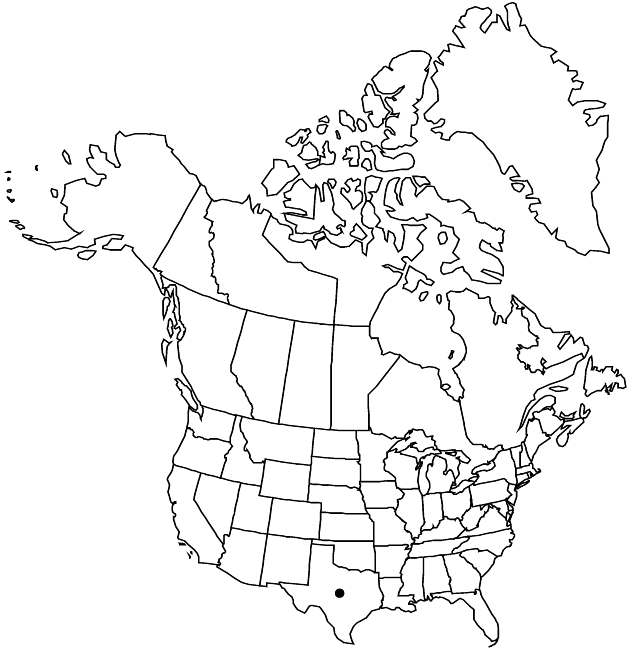Thymophylla pentachaeta var. puberula
Sida 11: 377. 1986.
Basionym: Thymophylla puberula Rydberg in N. L. Britton et al., N. Amer. Fl. 34: 177. 1915
Synonyms: Dyssodia puberula (Rydberg) Standley Dyssodia pentachaeta var. puberula (Rydberg) Strother
Treatment appears in FNA Volume 21. Treatment on page 242.
Leaves 10–28 mm overall, lobes 3–7 (–10), subequal. Peduncles 40–100 mm. Calyculi 0, or of 1–3 bractlets. Involucres campanulate to hemispheric, 4.5–5.5 × 4–5 mm. Phyllaries 12–17, margins of outer distinct ca. 1/3 their lengths, abaxial faces densely puberulent. Disc-florets 50–70. Pappi of 5 erose scales alternating with 5, 1–3-aristate scales.
Phenology: Flowering early spring and late summer, following rains.
Habitat: Calcareous bluffs and slopes, scrublands, deserts
Elevation: 300–2200 m
Discussion
Selected References
None.
Lower Taxa
None.
... more about "Thymophylla pentachaeta var. puberula"
puberulent +
introrse +
connate +
herbaceous +
scarious +
absent +
hirsute +
papillate +
continuous +
decurrent +
lobed +
winged;ribbed;winged;ribbed +
deltate +
stigmatic +
20;50 +
absent +
zygomorphic +
monomorphic +
dimorphic +
2mm;3mm +
staminate +
straight +
distinct +
proximal +
1;5 +
bisexual +
dispersed +
cylindric +
singly +
discoid +
indeterminate +
surrounding +
campanulate;hemispheric +
2mm;6mm +
1mm;3mm +
opposite +
cauline +
1/5;lengths +
distinct +
1/3 +
2-carpellate +
inferior +
attached +
anatropous +
persistent +
falling +
absent +
tough +
thick +
absent +
connate +
persistent +
distinct +
falling +
unequal +
Sida +
1986 +
pistillate +
absent +
fertile +
epaleate +
convex +
fibrous +
alternating +
distinct +
1-3-aristate +
exalbuminous +
modifed +
1;2 +
Illustrated +
alternate +
branched +
2-branched +
papillate +
Thymophylla pentachaeta var. puberula +
Thymophylla pentachaeta +
variety +
cylindric +
shorter +
much longer +
perennial +
less grayish;green +
subshrub +
